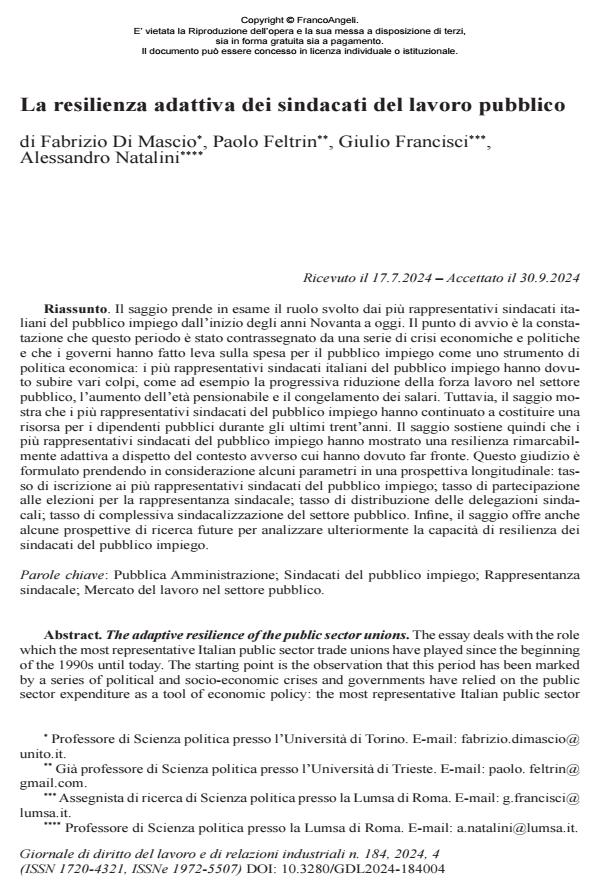The adaptive resilience of the public sector unions
Journal title GIORNALE DI DIRITTO DEL LAVORO E DI RELAZIONI INDUSTRIALI
Author/s Fabrizio Di Mascio, Paolo Feltrin, Giulio Francisci
Publishing Year 2025 Issue 2024/184
Language Italian Pages 23 P. 529-551 File size 754 KB
DOI 10.3280/GDL2024-184004
DOI is like a bar code for intellectual property: to have more infomation
click here
Below, you can see the article first page
If you want to buy this article in PDF format, you can do it, following the instructions to buy download credits

FrancoAngeli is member of Publishers International Linking Association, Inc (PILA), a not-for-profit association which run the CrossRef service enabling links to and from online scholarly content.
The essay deals with the role which the most representative Italian public sector trade unions have played since the beginning of the 1990s until today. The starting point is the observation that this period has been marked by a series of political and socio-economic crises and governments have relied on the public sector expenditure as a tool of economic policy: the most representative Italian public sector trade unions have had to face progressive blows such as, but not limited to, the progressive reduction of public sector workforce, the increase in the retirement age and the freezing of salaries. However, the essay shows that the most representative public sector trade unions have carried on representing a resource for public employees throughout the last thirty years. Thus, the essay argues that the most representative Italian public sector trade unions have shown a remarkably adaptive resilience despite the adverse context they have had to cope with. This assessment is formulated by taking into account some parameters in a longitudinal perspective: membership rate of the most representative public sector trade unions; participation rate in elections for trade union representation; distribution rate of trade union delegations; rate of overall unionization of the public sector. Finally, the essay also offers some future avenues of research to further analyze the resilience capacity of the public sector trade unions.
Keywords: Public administration; Public sector unions; Trade union representation; Public sector labour market.
Fabrizio Di Mascio, Paolo Feltrin, Giulio Francisci, La resilienza adattiva dei sindacati del lavoro pubblico in "GIORNALE DI DIRITTO DEL LAVORO E DI RELAZIONI INDUSTRIALI " 184/2024, pp 529-551, DOI: 10.3280/GDL2024-184004